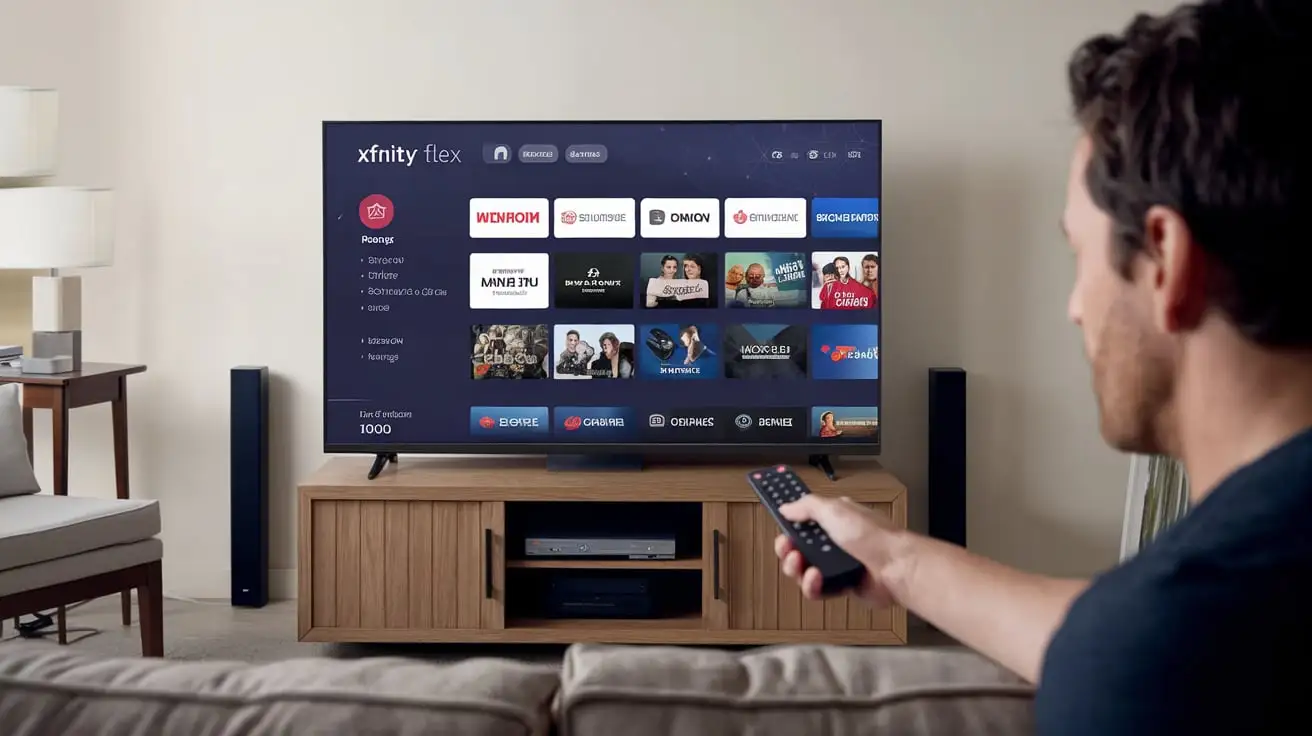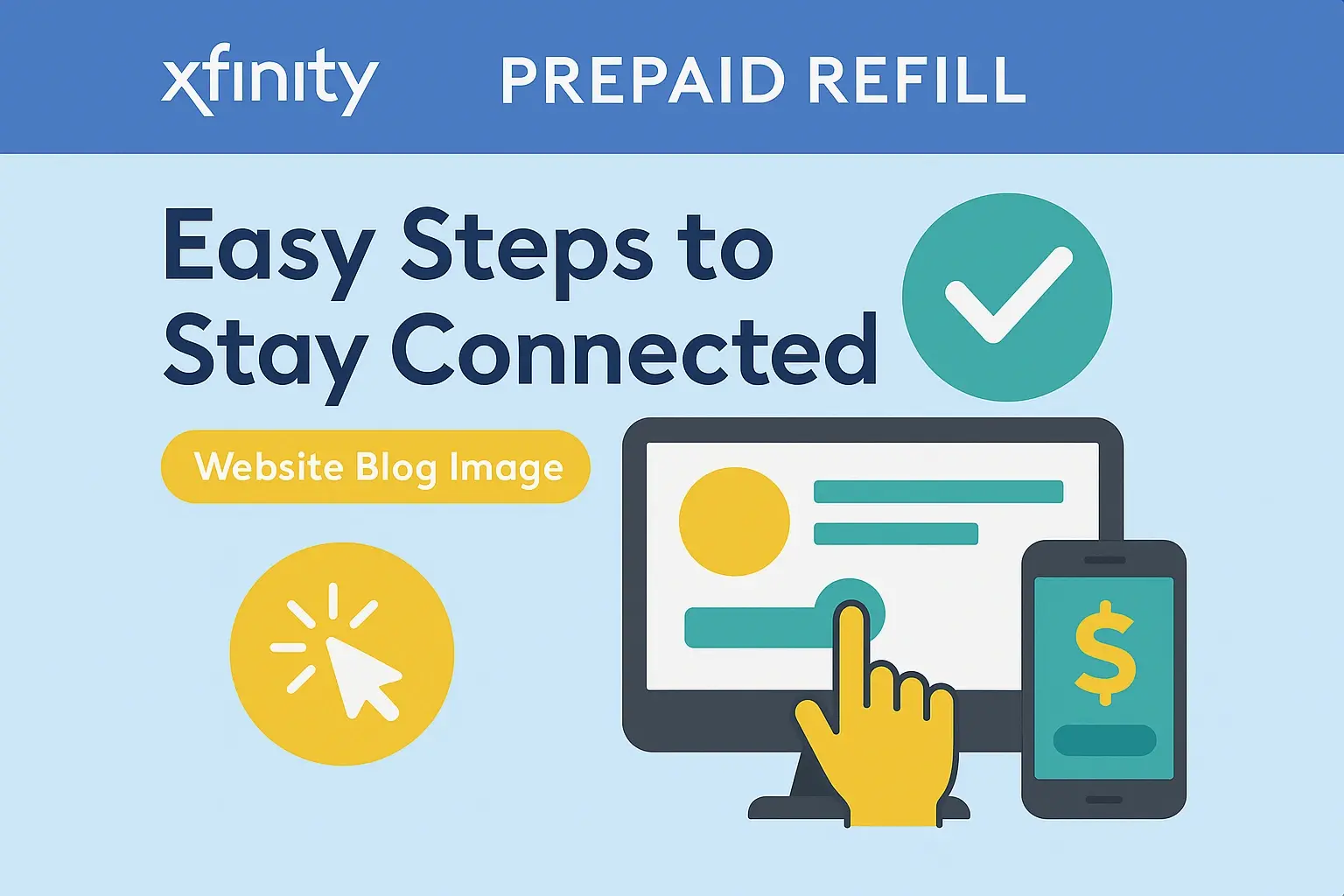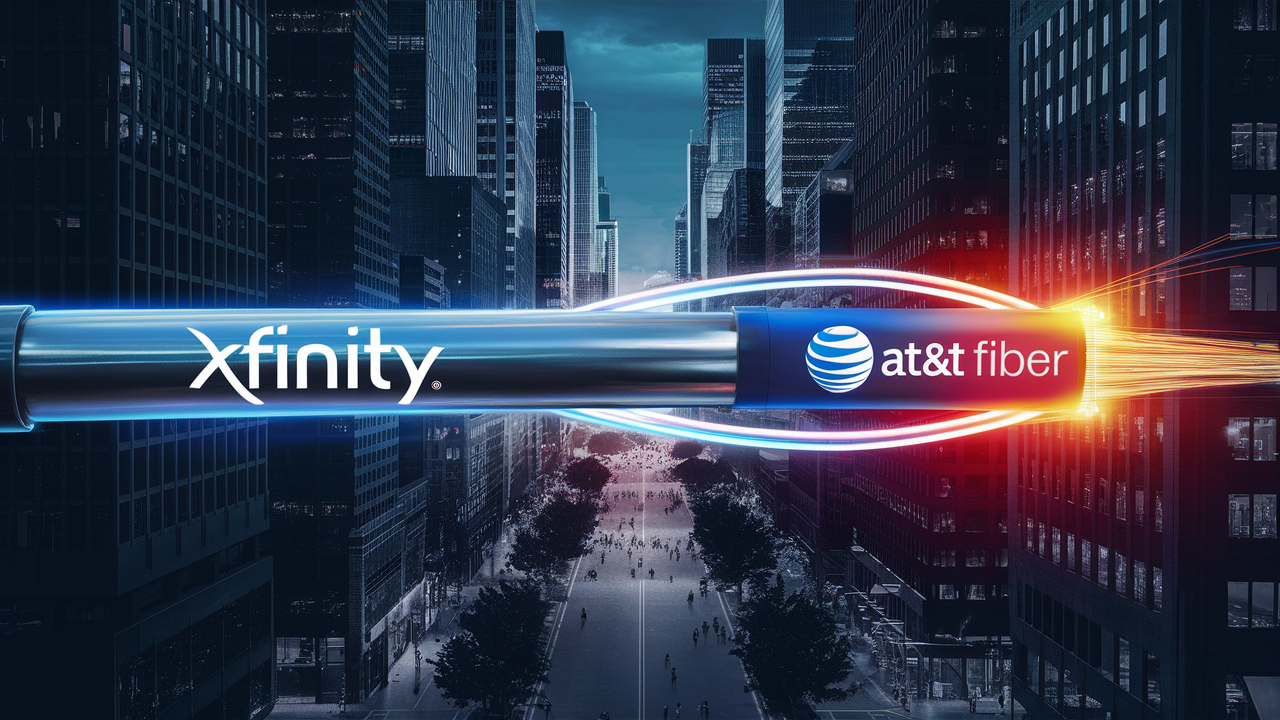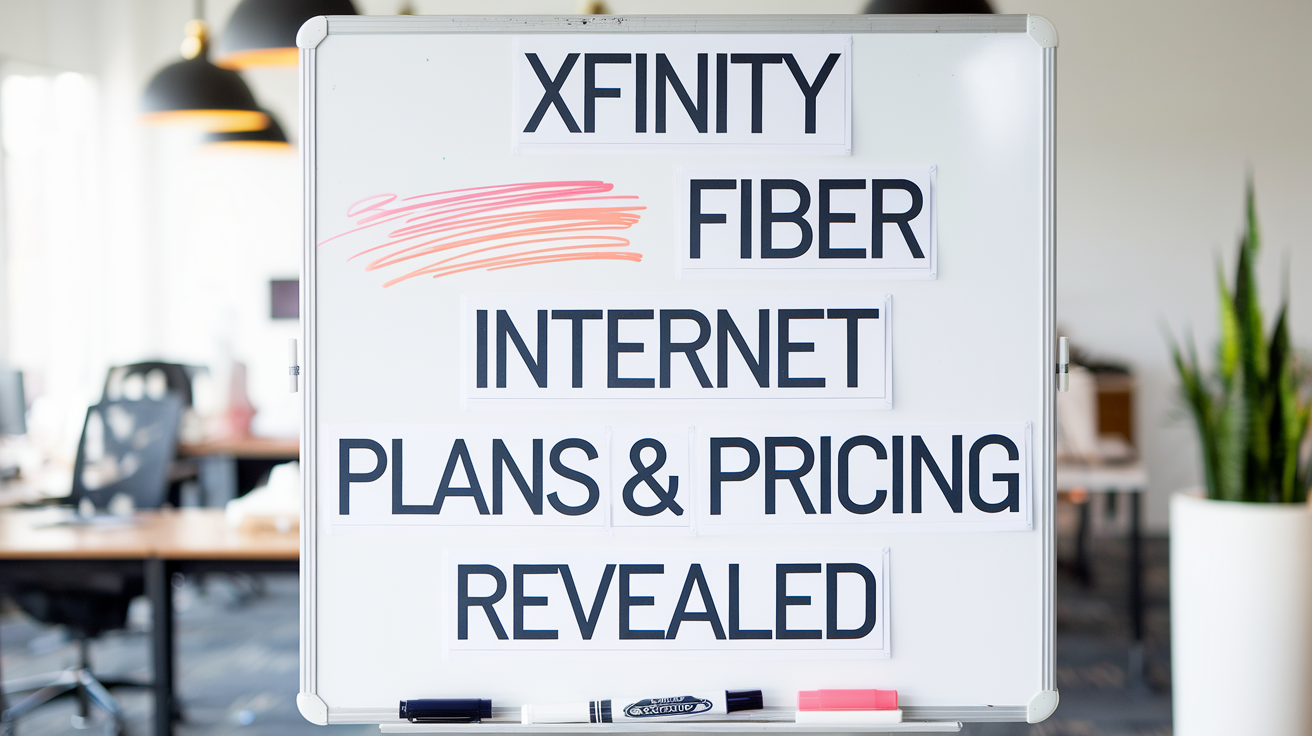Is Xfinity Flex Really Free?

Is Xfinity Flex truly free? This comprehensive 2025 guide unpacks the Xfinity Flex service, revealing its actual costs, benefits, and potential hidden fees. We explore what you get, who it's for, and how it stacks up against alternatives, helping you decide if it's a genuine no-cost streaming solution or comes with strings attached.
Unpacking the "Free" in Xfinity Flex: A 2025 Deep Dive
In the ever-evolving landscape of home entertainment in 2025, the promise of "free" services often comes with a caveat. Xfinity Flex, Comcast's internet-based TV streaming service, frequently appears with the alluring label of being "free." But as consumers, we've learned to approach such offers with a healthy dose of skepticism. Is Xfinity Flex genuinely a no-cost gateway to a world of content, or is it a cleverly packaged upsell designed to entice users into a larger ecosystem? This in-depth analysis will dissect the Xfinity Flex offering as it stands in 2025, cutting through the marketing jargon to provide a clear, unbiased picture. We'll explore its core functionalities, delve into the eligibility requirements, examine the content available, and crucially, scrutinize the true cost of accessing this service. By the end of this article, you'll have a comprehensive understanding of whether Xfinity Flex lives up to its "free" moniker and if it's the right streaming solution for your household's needs. With the proliferation of streaming platforms and the increasing complexity of subscription models, discerning the genuine value proposition of services like Flex is more important than ever. We aim to equip you with the knowledge to make an informed decision in the dynamic entertainment market of 2025.
What Exactly is Xfinity Flex?
At its heart, Xfinity Flex is a streaming TV service provided by Comcast. It's not a traditional cable TV package with hundreds of channels delivered via coaxial cable. Instead, Flex is an IP-based (Internet Protocol) service, meaning it streams content over your existing internet connection. This distinction is crucial. Flex is designed to be an aggregation platform, bringing together various streaming apps and services into a unified interface, controlled by a voice-enabled remote. It aims to simplify the streaming experience by reducing the need to jump between different apps on your smart TV or other streaming devices.
The Hardware: Xfinity Flex Box
To access Xfinity Flex, you typically receive a small, sleek 4K streaming TV Box from Comcast. This box connects to your TV via HDMI and to your home network via Wi-Fi or Ethernet. It's essentially a dedicated streaming device, similar in concept to an Apple TV, Roku, or Amazon Fire TV Stick, but provided by Comcast. The box comes with a voice remote, which is a key feature, allowing users to search for content, launch apps, and control playback using voice commands. This remote is a significant part of the user experience, aiming for intuitive navigation.
The Software: A Unified Streaming Hub
The real innovation of Flex lies in its software interface. It's designed to be a central hub for all your streaming needs. It allows you to access popular apps like Netflix, Hulu, Amazon Prime Video, Disney+, Peacock (Comcast's own streaming service), and many more. The interface provides a personalized dashboard, suggesting content based on your viewing habits. It also offers a curated selection of live channels accessible through apps like Pluto TV or Tubi, and importantly, it provides free access to Xfinity's own premier content, including live news, a selection of movies and TV shows, and access to Xfinity Stream app content. The goal is to consolidate the fragmented streaming market into a single, manageable experience.
The "Free" Component: What Does It Mean?
The "free" aspect of Xfinity Flex is directly tied to being an existing Xfinity Internet customer. If you subscribe to Xfinity's broadband service, the Flex streaming TV Box and the basic service are provided at no additional monthly rental fee. This is the core of Comcast's strategy: to offer a value-added service to its internet subscribers, thereby increasing customer loyalty and potentially encouraging upgrades to higher-tier internet plans. It's important to note that while the *service* and the *box rental* might be free for eligible Xfinity Internet customers, the content you access through Flex often still requires individual subscriptions. For instance, to watch Netflix on Flex, you still need a Netflix subscription. The "free" primarily refers to the platform and the device that enables access to these services and Comcast's own curated free content.
The True Cost: Understanding Xfinity Flex's Pricing Model in 2025
The question of "Is Xfinity Flex really free?" hinges on a nuanced understanding of its pricing structure in 2025. While Comcast markets Flex as a complimentary service, this "free" status is conditional and comes with several important considerations that can influence the overall cost of your home entertainment.
The Prerequisite: Xfinity Internet Service
The most significant condition for accessing Xfinity Flex at no additional monthly charge is that you must be an active subscriber to Xfinity Internet service. This is not a standalone product. If you don't have Xfinity internet, you cannot get Flex. Therefore, the "cost" of Flex is inherently bundled with the cost of your Xfinity internet plan. In 2025, Xfinity internet plans vary widely in price depending on speed tiers, data caps (where applicable), and promotional offers. A basic Xfinity internet plan might cost anywhere from $50 to $100+ per month, not including potential equipment rental fees for the modem/router, taxes, and other surcharges. The Flex service itself doesn't add to this monthly bill, but it's contingent upon maintaining that internet subscription.
No Monthly Box Rental Fee
For eligible Xfinity Internet customers, Comcast waives the typical monthly rental fee for the Xfinity Flex streaming TV Box. This is a key differentiator compared to their traditional Xfinity TV packages, where set-top box rental fees can add a substantial amount to the monthly bill. So, in terms of direct hardware rental cost for the Flex box, it is indeed free. This is a significant saving for users who might otherwise pay $10-$20 per month for a similar streaming device rental from a cable provider.
Content Subscriptions Are Extra
This is perhaps the most critical point to understand about the "free" nature of Flex. While the box and the platform are provided at no extra charge, the content you access through it is not. Flex acts as a portal. If you want to watch shows on Netflix, you need a Netflix subscription. If you want to stream movies on Max (formerly HBO Max), you need a Max subscription. If you want to access premium sports content through ESPN+, you need an ESPN+ subscription. The cost of these individual streaming service subscriptions is entirely separate and borne by the user. In 2025, the average consumer subscribes to multiple streaming services, and the combined cost can easily exceed $50-$100 per month, depending on the services chosen.
Free Content and Apps Included
Where Flex does offer genuine free content is through pre-loaded apps and curated channels. This includes access to services like Peacock (which has a free tier), Pluto TV, Tubi, and Xumo Play, all of which offer a selection of movies, TV shows, and live channels without requiring a separate subscription. Additionally, Flex provides access to Xfinity's own free content library, which may include live news channels, certain on-demand movies and shows, and content from Xfinity's Stream app (if you have a qualifying TV package, though Flex itself is not a TV package). These free content options are a genuine perk of the service.
Potential for Data Usage Costs
Since Flex streams content over your internet connection, all that viewing contributes to your monthly internet data usage. In 2025, many Xfinity internet plans come with data caps (e.g., 1.2 TB per month). Exceeding these caps can result in overage charges, which can be substantial. Streaming high-definition video can consume significant data. For example, an hour of HD streaming can use up to 3 GB of data. If you are a heavy streamer on Xfinity Flex, especially in 4K, you could potentially incur data overage fees if you're not mindful of your usage or if your plan doesn't have unlimited data. While not a direct fee for Flex itself, it's an indirect cost associated with using the service extensively on an Xfinity internet plan with data caps.
Upselling and Bundling Opportunities
Comcast's strategy with Flex is also to keep customers within its ecosystem. While Flex itself is free for internet customers, it can serve as an entry point for users to consider other Xfinity services. For instance, users might be more inclined to upgrade their internet speed to better support streaming, or they might be enticed by bundled offers that combine internet with Xfinity Mobile or even discounted Xfinity TV packages. Therefore, while the immediate cost of Flex is zero, its long-term value to Comcast lies in its ability to foster customer retention and drive sales of other services.
In summary, Xfinity Flex is "free" in the sense that there's no additional monthly fee for the box rental or the platform itself, provided you are an Xfinity Internet subscriber. However, the cost of your internet service, the subscriptions to third-party streaming apps, and potential data overage charges are all real costs associated with using Flex. It's a free gateway, but the content behind that gateway often requires payment.
Who Qualifies for Xfinity Flex? Eligibility and Requirements
The "free" aspect of Xfinity Flex is directly tied to specific eligibility criteria set by Comcast. Understanding these requirements is crucial for determining if you can access the service without incurring additional monthly charges beyond your existing internet bill. As of 2025, the primary prerequisites remain consistent.
Active Xfinity Internet Subscription
This is the non-negotiable cornerstone of Flex eligibility. You must be an active subscriber to an Xfinity Internet plan. This applies to both residential and, in some cases, small business internet accounts. The service is designed as a value-add for Comcast's broadband customers, aiming to enhance their internet experience and provide a unified platform for streaming entertainment. If you are an Xfinity internet customer, you generally qualify for one free Flex box per account.
Serviceability in Your Area
While Xfinity provides internet service across many regions, it's not universally available. You must reside in an area where Xfinity internet service is offered and actively maintained. If Xfinity does not provide internet service at your address, you will not be eligible for Flex.
Account Status and Payment History
Generally, customers in good standing with their Xfinity account are eligible. This means your internet service should be active, and your account should not have significant outstanding balances or be subject to service suspensions due to non-payment. While Flex is a free service, Comcast may have policies in place regarding account health for provisioning additional equipment or services.
One Box Per Account
Typically, Xfinity provides one complimentary Flex streaming TV Box per qualifying Xfinity Internet account. If you require additional boxes for other televisions in your home, you may need to inquire about additional rental options, which could incur a separate fee. The "free" offer is generally limited to the primary set-top box for the service.
No Existing Xfinity TV Subscription Required (But Can Be Integrated)
A key aspect of Flex is that it is *not* a traditional Xfinity TV subscription. You do not need to subscribe to Xfinity's cable TV packages to get Flex. In fact, Flex is often positioned as an alternative or supplement for customers who primarily use streaming services and may not want a full cable TV package. However, if you *do* have an Xfinity TV subscription, the Flex box can sometimes be used to access those services as well, potentially replacing older cable boxes and simplifying your setup. But for the core Flex offering, a TV subscription is not a prerequisite.
Installation and Activation
Upon qualifying, you'll typically receive the Flex box and voice remote. Activation is usually straightforward and can be done through on-screen prompts or by contacting Xfinity customer service. The box needs to be connected to your TV and your home internet network. There might be an initial setup fee or a self-installation kit provided, but the ongoing monthly fee for the box itself is waived for eligible customers.
In essence, if you are an Xfinity Internet customer in good standing in a serviceable area, you are highly likely to qualify for Xfinity Flex at no additional monthly hardware rental cost. The primary requirement is maintaining your Xfinity Internet service.
Features and Content: What Can You Stream with Flex?
The appeal of Xfinity Flex, beyond its "free" box, lies in the features and the breadth of content it can access. In 2025, the platform continues to evolve, offering a robust streaming hub. Here's a breakdown of what you can expect:
Unified Interface and Voice Control
The core feature is the user-friendly interface that aggregates content from various apps. The included voice remote is a standout element. Users can simply speak commands like "Find action movies," "Launch Netflix," or "What's the weather?" This hands-free navigation significantly enhances usability, making it easier to discover and access content across different services without endless scrolling.
Access to Popular Streaming Apps
Flex supports a wide array of leading streaming applications. This includes:
- Video On-Demand Giants: Netflix, Amazon Prime Video, Hulu, Disney+, Apple TV+, Paramount+, Max, and more.
- Free Streaming Services: Peacock (with its free tier), Pluto TV, Tubi, Xumo Play, Crackle, and The Roku Channel.
- Niche and Specialty Apps: Depending on availability and updates, this can include apps for news, sports, music, and specific interests.
It's important to reiterate that while the *access* to these apps via the Flex interface is free, the *subscriptions* to most of them (like Netflix, Max, Disney+) are not. However, the inclusion of popular free services is a significant benefit.
Xfinity's Own Content and Services
As a Comcast product, Flex provides direct access to Xfinity's proprietary content. This includes:
- Peacock: Seamless integration with Comcast's streaming service, Peacock, offering access to its free tier content and the option to upgrade to premium tiers.
- Xfinity Stream App: If you have a traditional Xfinity TV subscription, the Flex box can act as a client for the Xfinity Stream app, allowing you to watch your subscribed channels and on-demand content. For non-TV subscribers, it may offer access to a limited selection of channels or content available through the Stream app without a full TV package.
- Free Live TV & News: Access to live news channels and a selection of free linear channels through integrated apps like Pluto TV and Xumo Play, providing a lean-back viewing experience akin to traditional TV.
- Xfinity On Demand: A library of movies and TV shows available for rent or purchase, integrated into the Flex interface.
4K HDR Support
The Xfinity Flex streaming TV Box supports 4K Ultra HD and HDR (High Dynamic Range) content, provided your TV is also compatible. This ensures a high-quality viewing experience for supported content from services like Netflix and Amazon Prime Video, delivering sharper images and more vibrant colors.
Personalized Recommendations
The Flex interface learns your viewing habits and preferences to offer personalized content recommendations. This feature aims to help you discover new shows and movies you might enjoy, surfacing them directly on your dashboard.
No Traditional Cable Channels Included
It is crucial to understand that Xfinity Flex does *not* include a traditional lineup of live cable channels like CNN, ESPN, or your local broadcast stations (unless accessed through specific apps like NewsON or through a separate Xfinity TV subscription). If your primary goal is to replicate a full cable TV package, Flex alone will not suffice. It is a streaming-first service.
In essence, Xfinity Flex offers a comprehensive and convenient way to access a vast library of streaming content, both free and subscription-based, all through a single, easy-to-use interface with voice control. The value lies in the aggregation and the free hardware, not in providing a complete content package without additional costs.
Xfinity Flex vs. The Competition: A 2025 Comparison
In the crowded streaming device and platform market of 2025, Xfinity Flex faces stiff competition. Understanding how it stacks up against alternatives helps clarify its unique value proposition and potential drawbacks. The primary competitors fall into two categories: other free streaming platforms/devices and paid streaming devices.
| Feature | Xfinity Flex | Roku (e.g., Roku Express/Streaming Stick) | Amazon Fire TV (e.g., Fire TV Stick Lite/4K) | Google TV / Android TV (e.g., Chromecast with Google TV) |
|---|---|---|---|---|
| Cost of Device/Platform | Free (with Xfinity Internet subscription) | Starts at ~$20-$30 (one-time purchase) | Starts at ~$20-$30 (one-time purchase) | Starts at ~$30-$50 (one-time purchase) |
| Primary Requirement | Active Xfinity Internet subscription | None (any internet connection) | None (any internet connection) | None (any internet connection) |
| App Availability | Extensive, includes major SVODs, free services, Peacock | Vast library, one of the largest app stores | Extensive, integrates well with Amazon ecosystem | Strong integration with Google services, broad app support |
| Voice Control | Yes, integrated voice remote | Yes, via remote or mobile app | Yes, Alexa integration | Yes, Google Assistant integration |
| Free Content Aggregation | Strong, integrates Peacock free tier, Pluto TV, Tubi, Xumo | Aggregates free channels via apps like The Roku Channel, Pluto TV | Aggregates free content via Amazon's offerings, Freevee | Aggregates free content via Google TV channels, YouTube |
| Bundling/Ecosystem Lock-in | High, designed to complement Xfinity Internet | Low, open platform | Moderate, leans towards Amazon services | Moderate, leans towards Google services |
| Potential Hidden Costs | Cost of Xfinity Internet, data overages, 3rd party subscriptions | 3rd party subscriptions, potential ads | 3rd party subscriptions, potential ads, Amazon ecosystem push | 3rd party subscriptions, potential ads, Google ecosystem push |
Xfinity Flex vs. Other Free Streaming Services (e.g., Pluto TV, Tubi, Xumo)
Services like Pluto TV, Tubi, and Xumo offer free content directly through their own apps or websites. Xfinity Flex includes these apps, but it adds a layer of aggregation and a dedicated hardware device. The advantage of Flex is the unified interface and voice control, which these standalone services lack. However, if you only want to access free content and already have a smart TV or another streaming device, you might not need Flex.
Xfinity Flex vs. Paid Streaming Devices (Roku, Fire TV, Google TV)
This is where the comparison gets interesting. Paid devices like Roku, Amazon Fire TV, and Google TV offer similar functionality: access to a vast array of apps, voice control, and the ability to stream content. The key difference is the upfront cost. You purchase these devices once, and they work with any internet provider. Xfinity Flex, on the other hand, requires you to be an Xfinity Internet customer and provides the box for free.
Key Differentiators:
- Cost Model: Flex's "free" model is tied to your internet subscription, while others are a one-time purchase. If you're already paying for Xfinity Internet, Flex is a clear cost-saver compared to buying a new device. If you're not tied to Xfinity, buying a Roku or Fire TV stick is often more economical in the long run.
- Ecosystem Integration: Fire TV is deeply integrated with Amazon services, and Google TV with Google services. Flex is primarily focused on aggregating streaming services but also serves to keep you within the Xfinity ecosystem.
- App Selection: While all platforms have extensive app libraries, there can be minor differences in availability or performance for certain niche apps. Roku generally has the widest selection, but the major players are available on all.
- User Interface: Each platform has a distinct UI. Some users prefer the simplicity of Roku, others the Amazon-centric approach of Fire TV, the Google integration of Google TV, or the aggregated view of Flex.
Xfinity Flex vs. Smart TV Built-in Apps
Many modern smart TVs come with built-in streaming apps and their own operating systems (like Google TV, Roku TV, webOS, Tizen). If you have a capable smart TV, you might not need a separate streaming device at all. The Xfinity Flex box offers a potentially more streamlined experience, especially with its voice remote, and might have better performance than some lower-end smart TV interfaces. However, if your smart TV is up-to-date, the need for Flex diminishes unless you specifically want the Xfinity aggregation and voice features.
Ultimately, Xfinity Flex offers a compelling value proposition for existing Xfinity Internet customers who want a free, integrated streaming hub with voice control. For those not using Xfinity Internet, or who prefer a device they own outright, dedicated streaming devices like Roku, Fire TV, or Google TV offer more flexibility and portability.
Navigating Potential Pitfalls and Hidden Fees
While Xfinity Flex is marketed as "free," like many services, it's essential to be aware of potential pitfalls and indirect costs that can arise. Understanding these nuances will help you manage expectations and avoid unexpected expenses in 2025.
The Internet Bill is Not Free
The most obvious "cost" is the Xfinity Internet service itself. As established, Flex is only free if you're paying for Xfinity Internet. These bills can include various fees and surcharges beyond the advertised base rate, such as modem rental fees (if you don't own your own), broadcast TV fees, regional sports fees, and administrative fees. Always review your Xfinity bill carefully to understand the total cost of your internet service, which enables Flex.
Data Caps and Overage Charges
Xfinity commonly imposes data caps on its internet plans, often around 1.2 terabytes (TB) per month. Streaming video, especially in 4K, consumes a significant amount of data. If your household streams heavily using Flex (and other internet activities), you could exceed your data allowance. Xfinity typically charges for data overage
Faq
Is Xfinity Flex free with internet?
Yes, the Xfinity Flex 4K streaming device is provided at no additional monthly equipment cost for customers with a qualifying Xfinity Internet plan. There is no upfront fee either.
Do I need an Xfinity subscription for Flex?
Yes, an active Xfinity Internet subscription is an absolute requirement to use the Xfinity Flex device. It will not work with any other internet service provider.
What channels are free with Xfinity Flex?
Flex provides free access to thousands of shows and movies through integrated apps like Pluto TV, Xumo, Tubi, and Crackle. It also includes a free subscription to the ad-supported tier of Peacock Premium, which features NBC shows, movies, news, and sports.
Are there hidden fees with Xfinity Flex?
There is no monthly equipment fee for Flex itself. However, you must pay for your Xfinity Internet service. Additionally, premium apps like Netflix or HBO Max require their own separate subscriptions. Always check your bill for any rare, location-specific taxes.
Can I watch live TV on Xfinity Flex?
You cannot watch traditional live cable TV channels on Flex unless you subscribe to them through a service like YouTube TV, Hulu + Live TV, or Sling TV and use their app on Flex. Flex itself offers free live news channels from providers like ABC News Live and Cheddar through its free content hub.
Does Xfinity Flex require a cable box?
No, Flex is a replacement for a cable box for internet-only customers. It is designed specifically for those who have cut the cord on traditional cable TV.
Is Netflix free on Xfinity Flex?
No. The Netflix app is free to download on Flex, but accessing Netflix's content requires a paid Netflix subscription. Flex does not include Netflix for free.
How many Xfinity Flex boxes can I get for free?
Typically, Xfinity provides one Flex box per household for free. Depending on promotions or your specific plan, you may be eligible for a second one at no cost, but this is not guaranteed. Additional boxes may incur a monthly fee.
Is Xfinity Flex better than Roku or Firestick?
"Better" is subjective. Flex is free and offers great integration with Xfinity's free content. Roku and Fire Stick have vastly larger app selections and are not locked to one internet provider. For versatility, Roku/Fire Stick win. For a free, integrated experience for Xfinity customers, Flex is excellent.
What internet speed do I need for Xfinity Flex?
For standard HD streaming, a minimum of 10-25 Mbps is recommended. For consistent 4K UHD streaming, you should have an internet plan with at least 50 Mbps download speed. Most modern Xfinity Internet plans easily support this.





